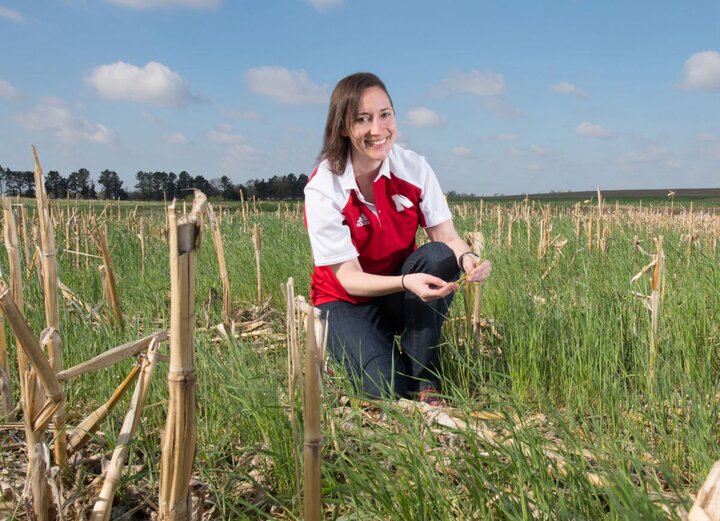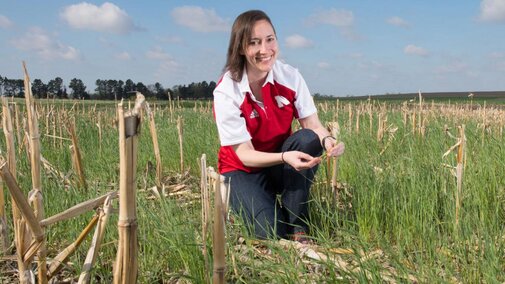
Three University of Nebraska–Lincoln Department of Agronomy and Horticulture faculty were awarded a grant from the Nebraska Environmental Trust to develop a decision-support tool for the successful incorporation of cover crops into Nebraska cropping systems.
Funding is $34,900 for the first year with a potential for second- and third-year funding of $41,530 and $41,180 respectively. Principal investigators are Andrea Basche, assistant professor, Daren Redfearn, associate professor, and Katja Koehler-Cole, research assistant professor.
The overall project goal is to establish a network of farmers and scientists engaged in managing and studying cover crops. This network will compile previously collected data and integrate existing performance and management information to better understand cover crop performance across different regions, management scenarios (i.e., planting dates, cover crop species), climate zones, and soil types. The farmers and scientists will provide regular feedback to the research team to answer region-specific questions of importance to producers.
Cover crops represent a significant opportunity to reduce soil degradation and, if managed to optimize benefits, could promote soil regeneration on nearly three-quarters of Nebraska cropland. Cover crops have been shown to increase water retention, reduce soil erosion, and offset carbon declines with increasing climate variability. They also may be used as supplemental forage in fall and spring when livestock feed is limited.
According to the USDA’s most recent Census of Agriculture, less than 4% of the 19 million cropland acres in the state use cover crops. Farmers report that their biggest challenges are the limited planting window for fall-seeded cover crops and the time needed for spring termination. Farmers also report a need for more regionally based recommendations on a range of cover crop species for corn-soybean rotations, as well as a desire to learn more about cover crop management from their producer peers.
The Nebraska Legislature created the Nebraska Environmental Trust in 1992 to preserve, protect, and restore our natural resources for future generations. This project is one of the 117 projects receiving $19,501,444 in grant awards from the Nebraska Environmental Trust in 2019. Of these, 85 were new applications and 32 are carry-over projects.

